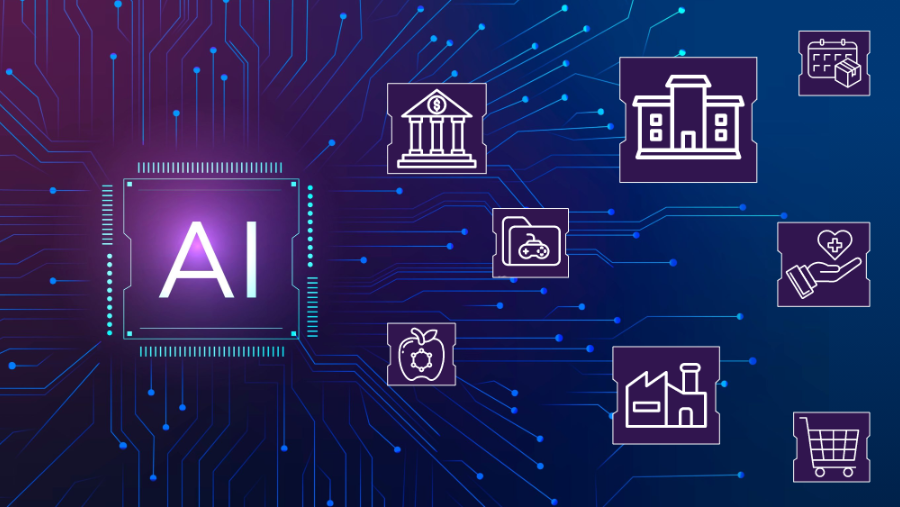Revolutionizing Industries with Generative AI Applications
Generative AI, or generative artificial intelligence, is the use of AI to create new content such as text, images, music, audio, and video. Generative AI makes use of machine learning (ML) models to find patterns and correlations in a dataset of human-generated information. After that, it uses the patterns it has discovered to create new material.
The most common approach to training generative AI models is supervised learning, which involves providing the model with a set of human-generated content along with labels. It then learns to generate material with labels that are both the same as and similar to stuff created by humans.
Typical uses of generative AI
Massive amounts of data are processed by generative AI, which then outputs answers and insights in the form of text, graphics, and easily navigable formats. Using generative AI, one can:
- Use conversational interfaces and summaries to analyze massive amounts of unstructured data;
- Enhance chat and search experiences to enhance consumer connections
- Assistance with standard tasks including replying to requests for proposals, translating marketing collateral into several languages, verifying that client agreements comply, and more.
Popular Generative AI applications
- Language: Large language models (LLMs) are one of the most well-known types of language-based generative models. Numerous other tasks, including writing essays, creating code, interpreting articles, and even analyzing genetic sequences, include the use of big language models.
- Audio: Identifying objects in movies and creating the appropriate sounds for different scenes, creating original music, and creating songs and short audio snippets using text inputs are a few examples.
- Visual: In addition to creating realistic pictures for virtual or augmented reality, 3D models for video games, logo creation, image improvement or editing, and other applications, generative AI models can generate graphs displaying novel chemical compounds and molecules to aid in medication discovery.
- Synthetic data: Synthetic data is also utilized in self-driving car training; an autonomous vehicle’s capacity to be road tested in a realistic 3D environment improves safety, efficiency, and flexibility while minimizing risk and overhead. Synthetic data is very useful for training AI models when data is unavailable, limited, or simply unable to address corner cases with high accuracy.
Risks of generative AI
The risks associated with generative AI are substantial and rapidly changing. A variety of threat actors has already used the technology to create “deep fakes” or product copies, as well as artifacts that enable increasingly intricate schemes.
- Insufficient clarity: Even the businesses who developed ChatGPT and generative AI models do not always fully understand how they operate, therefore these technologies are unpredictable.
- Precision:.Sometimes replies generated by generative AI systems are contrived and erroneous. Examine each output for correctness, suitability, and practical value before relying on or disseminating information in public.
- Prejudice: Policies or controls have to be implemented to identify and address biased outputs that comply with applicable legal requirements and business policy.
- Intellectual property rights (IP) and copyright: Confidential enterprise information is not currently covered by any verifiable data governance and protection guarantees. We urge businesses to implement measures to prevent unintentionally disclosing intellectual property (IP). Users should anticipate that whatever information they enter into ChatGPT and its competitors will become public knowledge.
- Hacking and security: Businesses must ensure that mitigation protections are in place and ready for the exploitation of generative AI systems by hostile actors for cyber and fraud attacks, including those posing as employees using deep fakes. Discuss with your cyber-insurance provider the scope of your current policy’s coverage for AI-related breaches.
Practical uses of generative AI today
The areas of generative AI, science, and technology commercialization will advance at a rapid pace. However, applications such as generative design, generative engineering, artificial intelligence, and content enrichment are already starting to take shape. High-level practical applications that are now in use include the following.
- Improved written content by creating a “draft” with specific style and length requirements.
- Responding to inquiries and producing discoveries: Users can find answers to their questions using data and prompt information.
- Text manipulation aims to soften or professionalize language.
- Summarize talks, articles, emails, and webpages.
- Simplify by breaking down titles, creating outlines, and extracting important information.
- Sorting content based on specific usage circumstances, such as subject and sentiment.
- Improving Chatbot effectiveness by extracting “entities,” identifying feelings, and constructing journey flows based on generic descriptions.
- Software coding includes code generation, translation, explanation, and verification.
Source

